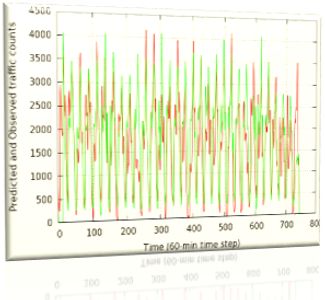PECOUNT-I
Traffic Records as Time Series
PECOUNT-I was developed for Aggregated stations, with long data records, and which are typically permanent stations. Hourly traffic time series have long-range dependence, thus, an Autoregressive Fractionally Integrated Moving Average (ARFIMA) model was adopted.
Structure of PECOUNT-I
For long-term data records, our approach uses an Autoregressive Fractional Integrated Moving Average (AFRIMA) technique (Olatayo and Adedotun, 2014) to extend hourly traffic counts at permanent stations; the model is entitled PECOUNT-I. This is the highest level model that feeds information and prediction to the downstream stations with medium range data

Overall structure of PECOUNT-I
Performance

Comparing observed & predicted values

Performance is great when dealing with the permanent stations
This project was supported by The City of Toronto's Transportation Services Division and Atmospheric Fund
Copyright © 2019 Traffic Emission Prediction scheme (TEPs) - All Rights Reserved.
Updated on Feb 28, 2019